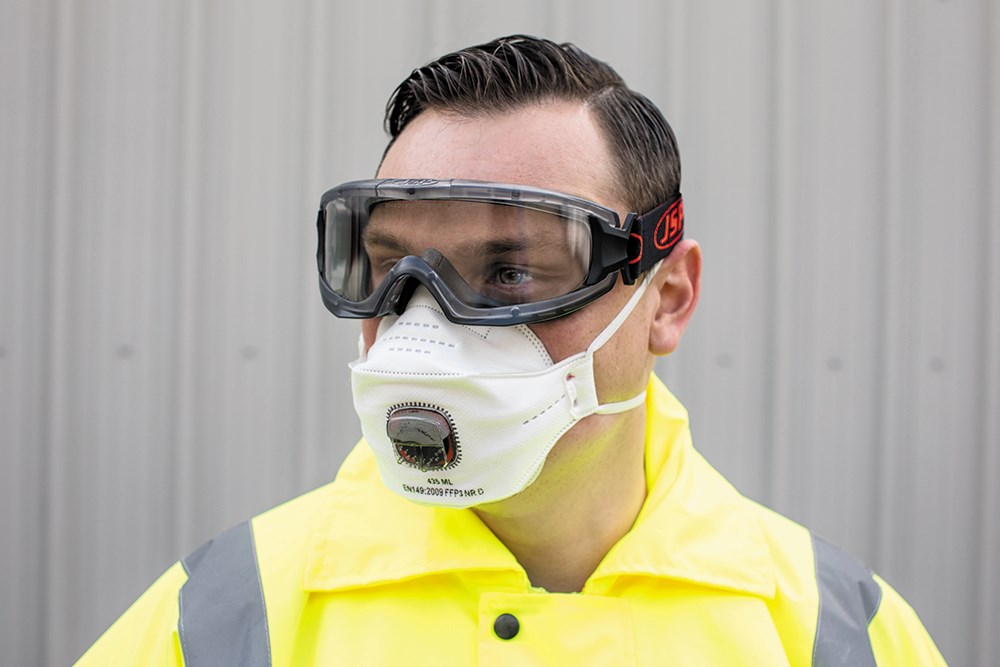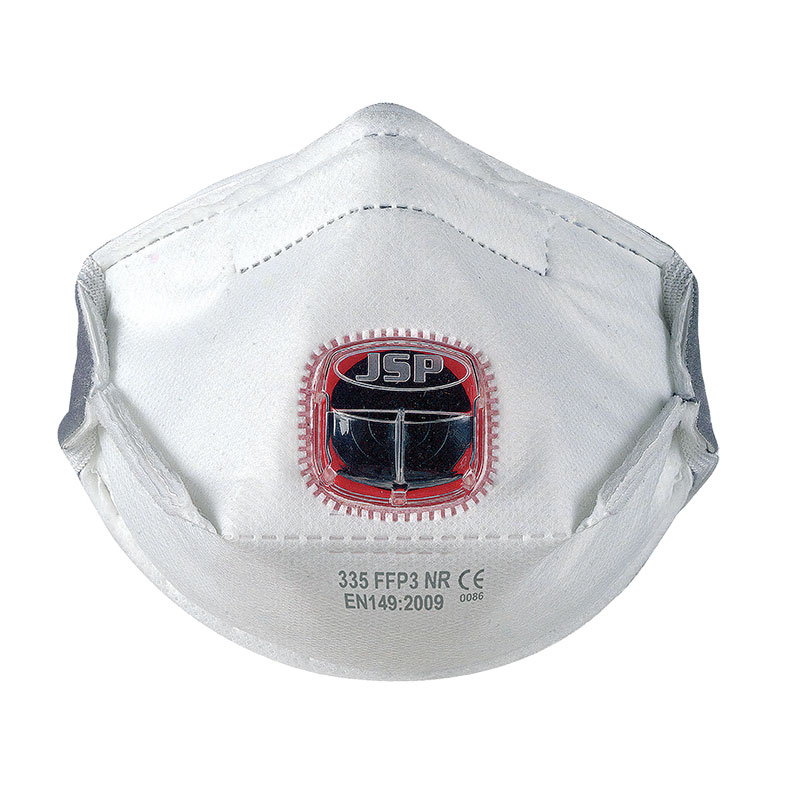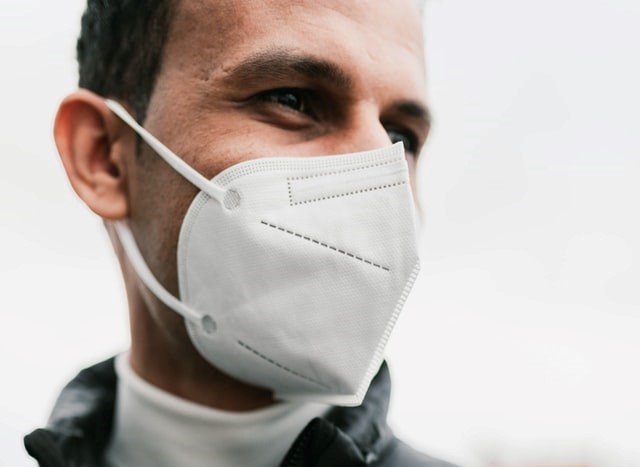How can I tell if my dust mask is genuine and properly certified RPE?
 With many types of respirators, masks, and face coverings in use and on the market, it is important to understand how to identify a genuine and conforming respirator. In applications where respiratory protective equipment (RPE) is required, it must be tested and certified to the relevant regulations and performance standards. The British company JSP is a Registered Safety Supplier. JSP provides its users and customers with the assurance that the purchased products have been properly tested and certified according to the relevant market standards. In the UK this means certification to the PPE Regulation with CE marking or UKCA marking and conformity with EN 149, the European standard for disposable dust masks. [caption id="attachment_308355" align="alignnone" width="800"]
With many types of respirators, masks, and face coverings in use and on the market, it is important to understand how to identify a genuine and conforming respirator. In applications where respiratory protective equipment (RPE) is required, it must be tested and certified to the relevant regulations and performance standards. The British company JSP is a Registered Safety Supplier. JSP provides its users and customers with the assurance that the purchased products have been properly tested and certified according to the relevant market standards. In the UK this means certification to the PPE Regulation with CE marking or UKCA marking and conformity with EN 149, the European standard for disposable dust masks. [caption id="attachment_308355" align="alignnone" width="800"] Certified JSP disposable mask FFP3[/caption]
Certified JSP disposable mask FFP3[/caption]
Markings on the masks
Masks that meet this criteria display markings that detail performance and usage: Conformity marking – CE / UKCANotified / approved body number – Four digit number below conformity markingStandard reference – EN 149Performance level – FFP3 (/FFP2/FFP1)Usage type – NR (non-reusable) or R (reusable) [caption id="attachment_308356" align="alignnone" width="640"] Image of a mask which is not a genuine and conforming respirator[/caption]
Image of a mask which is not a genuine and conforming respirator[/caption]
Respirators in other regions
Respirators in different regions conform to different regional standards. In the US, comparable NIOSH respirators are classified as N95 or N99. Australia and New Zealand Standard AS/NZS 1716 classifies particulate respirators as P1, P2, or P3.
Medical/surgical masks and face coverings
During the pandemic, use of medical masks and face coverings has been extensive. These products, while able to capture droplets exhaled by the wearer, do not provide respiratory protection. Medical and surgical masks capture droplets exhaled by the user in order to protect his environment, and also provide protection for the mask wearer from splashes of liquids that may come into contact with the mask. These products comply with EN 14683, for medical protective masks, and are not classed by the HSE as PPE when worn outside healthcare settings.
The difference between medical/surgical masks and industrial protective masks
When it comes to particulate air pollution in industrial conditions, surgical masks do not provide the necessary protection because the material from which they are produced cannot filter polluted air. Surgical masks belong to category I personal protective equipment, while FFP masks belong to category III personal protective equipment. In addition, medical and surgical masks do not create a complete seal, which would prevent the ingress of particles. Therefore, if there is no tight fit of the respirator on the face, the contaminated air will pass through every gap, that is, through every space that did not rest on the face.
Fit testing
Making sure that your dust mask is genuine and properly certified, with the required protection level, confirms that the respirator is adequate. To ensure the respirator is suitable, fit testing must be carried out.  Disposable respirators are designed to create a tight seal to the face to provide the wearer with the necessary protection. Testing is done to assess the seal of the respirator and to ensure that the individual can achieve a good fit with the specific mask model. A poorly fitting respirator will reduce the level of protection it offers. The testing checks whether the respirator matches the face characteristics of the person wearing it and whether it fits adequately on his face. Such tests serve not only as a method of ensuring that workers are adequately protected, but also as a form of training them to wear a mask properly. The range of the Albo company includes numerous JSP products for the protection of respiratory organs. The Albo team is at your disposal for all assistance and additional information in the selection of protective equipment.
Disposable respirators are designed to create a tight seal to the face to provide the wearer with the necessary protection. Testing is done to assess the seal of the respirator and to ensure that the individual can achieve a good fit with the specific mask model. A poorly fitting respirator will reduce the level of protection it offers. The testing checks whether the respirator matches the face characteristics of the person wearing it and whether it fits adequately on his face. Such tests serve not only as a method of ensuring that workers are adequately protected, but also as a form of training them to wear a mask properly. The range of the Albo company includes numerous JSP products for the protection of respiratory organs. The Albo team is at your disposal for all assistance and additional information in the selection of protective equipment.


